Rashes should be considered a “key diagnostic sign” of Covid-19, according to a study, which found 8% of people who test positive for the virus have some form of rash.
A team of researchers from the Covid Symptom Study surveyed 12,000 people who had skin rashes, as well as suspected or confirmed Covid-19.
They asked for images of rashes from survey respondents, especially people of colour, who are currently under-represented in dermatology resources.
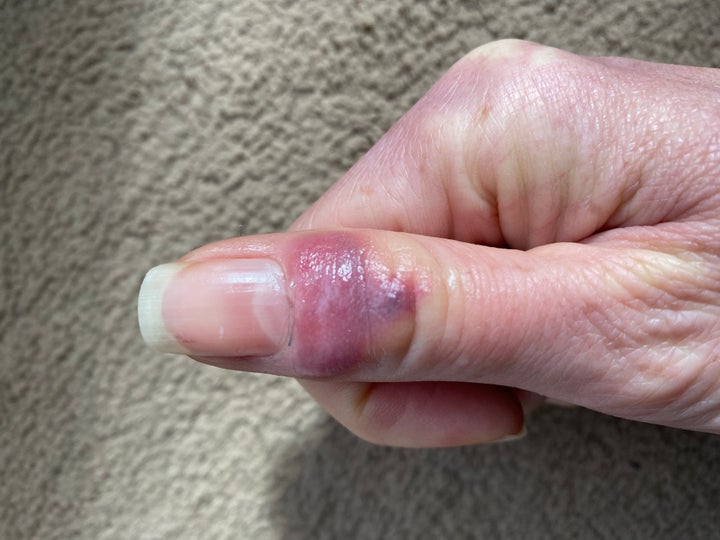
In some cases the rash can occur on its own, the study found, without any other symptoms of the virus such as a continuous cough, fever, or loss of smell. Almost one in five (17%) who had tested positive for coronavirus reported a rash as the first symptom of the disease. Among those who reported a rash – and were confirmed as having coronavirus – 21% said it was their only symptom.
The NHS only lists three symptoms of coronavirus. These are: a high temperature, new and continuous cough, and a loss or change to your sense of smell or taste. Rashes aren’t widely considered to be a symptom of the virus.
We asked researchers from the Covid Symptom Study to share photos of the rashes that have regularly showed up in coronavirus patients.
Key rashes to look out for
There are three main types of rash the researchers found showed up in patients.
The first is a hive-type rash (also referred to as urticaria), where raised bumps can suddenly appear on the skin – these can come and go quite quickly over hours and can be very itchy. Think: nettle rash.
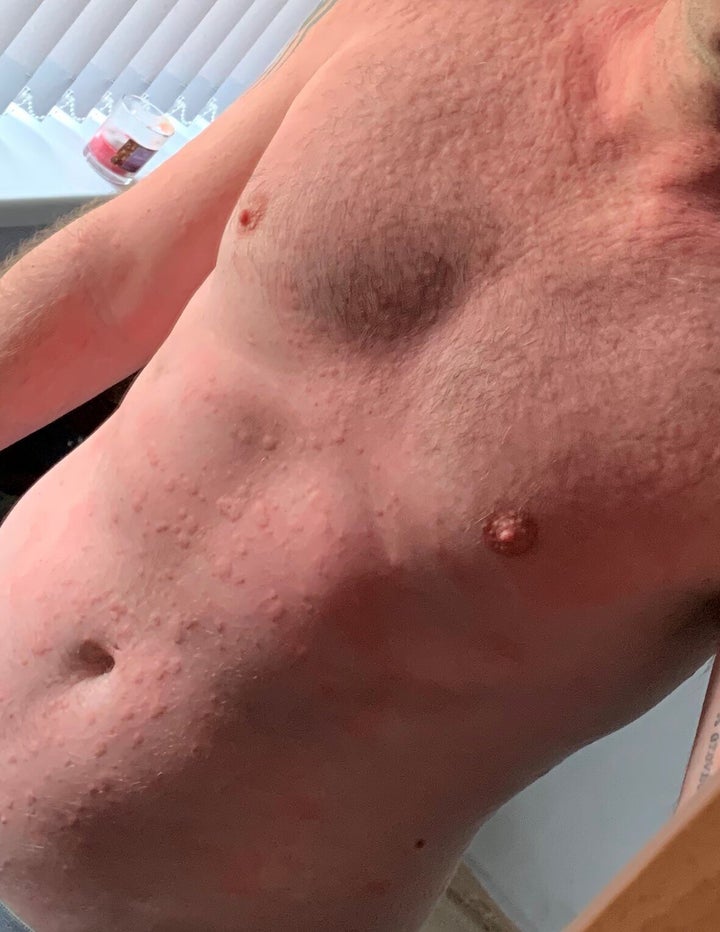

Urticaria rashes can appear quite early on in the infection, but also last a long time, said researchers.
It often starts with intense itching on the palm of your hands or soles of your feet, but it can also cause swelling of the lips and eyelids.
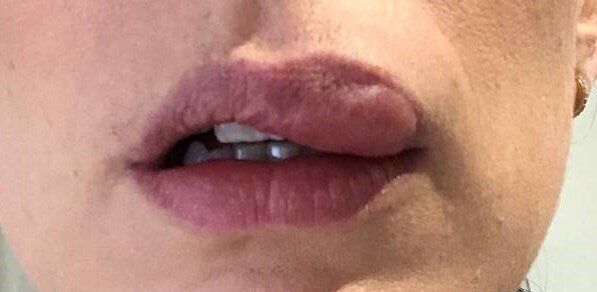
The second type of rash seen in the Covid Symptom Study is a prickly heat-type rash – a bit like chickenpox – where small, itchy red bumps can appear anywhere on the body, but particularly the elbows and knees, as well as the backs of the hands and feet.
This type of rash can persist for days or weeks, said researchers.
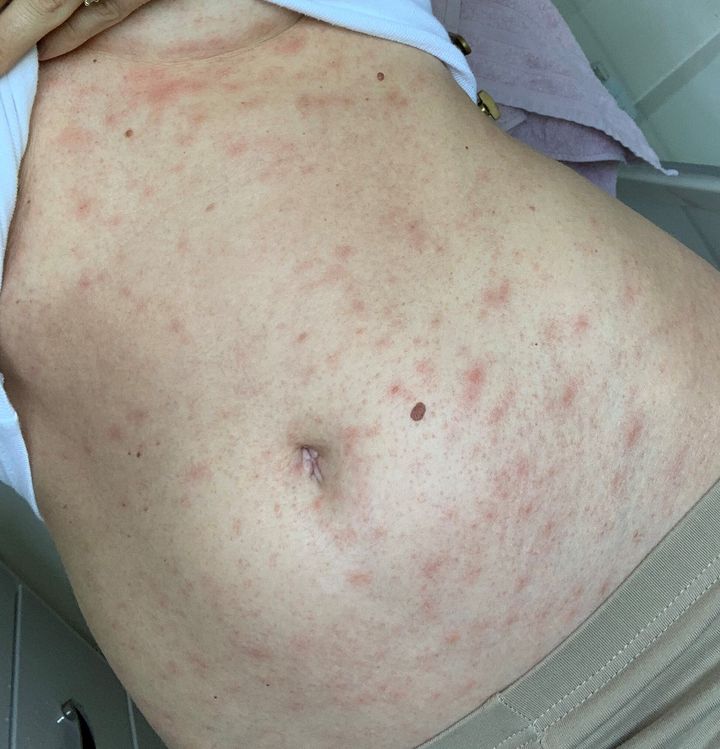
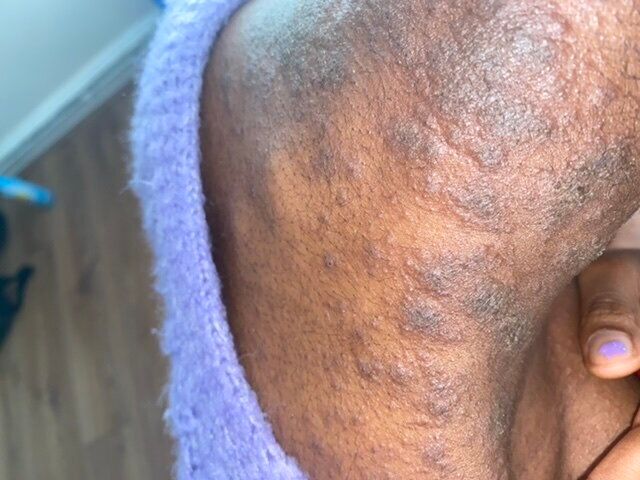

The third type of rash, known as Covid fingers and toes (sometimes described as chilblains), is where red and purple bumps appear on the fingers or toes.
These bumps may be sore, but not usually itchy. This type of rash is most specific to Covid-19 and is more common in younger people with the disease. It also tends to present later on in someone’s illness.


A separate study of patients in Spain found that, in addition to these rashes, some patients experienced a type similar to pityriasis rosea, a skin condition, which presents as a pink, scaly rash. There’s a theory this type of rash may be caused by a viral infection, so the appearance of it would make sense.
“Many viral infections can affect the skin, so it’s not surprising we’re seeing these rashes in Covid-19,” says Covid Symptom Study author Dr Veronique Bataille, consultant dermatologist at St Thomas’ Hospital and King’s College London (KCL).
“It’s important people know that in some cases, a rash may be the first or only symptom of the disease. If you notice a new rash, you should take it seriously by self-isolating and getting tested as soon as possible.”
The current swab tests for coronavirus should ideally be taken within three days of noticing symptoms – after five days they might not work. If you do notice a rash, you could also call your GP surgery or pharmacy who should be able to advise on possible treatments and what to do next.
“It’s important people know that in some cases, a rash may be the first or only symptom of the disease”
- Dr Veronique Bataille
Dr Tanya Bleiker, president of the British Association of Dermatologists (BAD), says such studies play an important role in building our understanding of the disease as a whole – especially as in the early days of the Covid-19 pandemic, the various skin manifestations of the disease were “poorly understood”.
BAD is working with the Covid Symptom Study team to develop a website that will host a library of the different skin manifestations of the virus. Members of the public should be cautious about self-diagnosing Covid-19 based on skin symptoms, said BAD, as rashes and other skin lesions are common and hard to differentiate between without expertise.
“We hope that this will be of benefit to healthcare professionals as well as the public who may be unaware of skin symptoms which would warrant self-isolation,” says Dr Bleiker.
